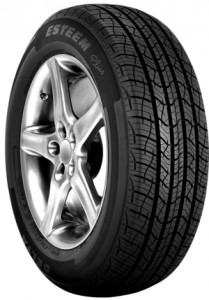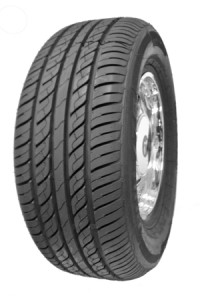The private brand tire segment has seen its marketshare fall throughout the 2000s as a result of a hurting tire industry stricken by global recession and additional duties placed on passenger tires imported from China.
Although the segment has seen better days, it adapted to market pressures and restructured itself. Despite pressures, private branders reacted to changing consumer mindsets and noticed the rising demand for value products – tires that offer great quality at a reasonable price.
In other words, pretty much what private brand tires have always been.
Driving this is a changing consumer mentality that has been reflected outside the tire industry, most notably in the grocery industry. The 2013 New York Times article titled, “Groceries Are Cleaning Up In Store-Brand Aisles” cited a Nielsen study that found over the last three years, sales of store brands grew 18.2%, accounting for $111 billion in sales.
“Regardless if it’s tires or other consumer products, consumers today are seeking out quality products at a lesser price point because of the pressure that’s placed on their income,” says Pat McLaughlin, president at Sure Tire. 
The Tariff Situation
The Section 421 duty imposed on imported Chinese-made consumer tires threatened private branders’ value proposition. When U.S.-based tiremakers got out of contract production, private brand marketers had to turn to other producers with available low-cost production capacity: China.
In order to compete and provide a value to customers, private brand marketers formed a coalition to fight the Obama Administration-imposed tariff. When their fight failed, private branders adjusted. Some, like Del-Nat Tire Corp. and TBC Wholesale, sought foreign trade zone status – a policy that allowed private branders to not pay the duty until they sold the tires.
As a result, private branders spent the entire spring and summer of 2012 buying Chinese-manufactured tires. While others depleted their inventories, these companies were stocking up in anticipation of the three-year tariff’s end.
On Sept. 21, 2012, when the Section 421 tariff expired, companies with foreign trade zone status sold their inventory at the current market price and the lower current duty.
“For the next few months after the tariff, manufacturers had to adjust prices to compete with the new price level in the market,” says Jim Mayfield, president at Del-Nat. “There was some pricing turmoil but we were able to weather that and continue on.”
“The additional duties went from 25% to 0% overnight, and that always creates challenges within the industry,” says Bill Dashiell, vice president of product marketing at TBC Wholesale. “We had contingencies in place where we were able to adapt our pricing very quickly to the changes in the duty structure, which helped protect our customers.”
The Economic Situation
During the Great Recession, the average age of vehicles increased to more than 10 years and miles driven decreased. In 2013, a R.L. Polk’s survey found that the average age of a passenger car in the U.S. was 11 years old. Private branders understood that consumers didn’t just want a low price – they wanted quality. To meet that requirement meant partnering with quality manufacturers.
“We make sure that we’re sourcing a quality product,” says Joshua Simpson of Hercules Tire & Rubber Co. “We only source from vendor partners, vendors that are true partners to our brand.”
The shift to Chinese manufacturers remains the same today, but private branders have diversified their sourcing to other overseas manufacturers in countries such as Indonesia and Thailand.
“Of course, pricing is important, but having a quality manufacturer build products is the most important aspect of what we do,” says Sure Tire’s McLaughlin. “We believe the quality that we bring into the marketplace is as good a quality as you can get. The pricing is important, but the quality of the manufacturer is more important than the price.”
While quality is important, consumers only want to spend a proportional amount of money on maintenance and repair as compared to the value of their vehicles. They won’t spend as much on older cars and SUVs as they might on newer vehicles.
Because of this, private branders present a wide range of products to capture replacement dollars at the first, second, third or even fourth stage of tire replacement. Many times, when major brands stop manufacturing a certain OE replacement product, usually due to the age of the tire line, private branders see an opportunity to fill that gap in the market – provided there is a need.
“So long as the sizes have strength in the replacement market, we’ll continue to participate in offering them,” McLaughlin says.
Value for the Shop
Private branders not only offer their customers a value product, they give dealers the ability to control that product in their market, effectively making it their own brand. As a result, most traditional private brand programs do not have national consumer marketing budgets. Private branders give dealers exclusive brands and protected territories because they believe dealers know best when it comes to marketing locally.
 “Our stockholders take our tires to market in the most effective way for their business. They don’t need us to determine how best to do that,” says Del-Nat’s Mayfield. “We keep costs, overhead and expenses low so we can operate this on a very lean model.”
“Our stockholders take our tires to market in the most effective way for their business. They don’t need us to determine how best to do that,” says Del-Nat’s Mayfield. “We keep costs, overhead and expenses low so we can operate this on a very lean model.”
Unlike other private branders, Del-Nat is a co-op – its owners are its customers. As a result, the members work together to determine what materials and products work best for their interests.
Hercules, because it looks to broaden its opportunities, offers dealers additional programs and resources.
“We have a lot of support materials for the dealer,” says Suzi Mitchell at Hercules. “We think that what we offer the dealer to support that sale and to support them at the counter is fairly robust.”
Point of Purchase Advertising International’s recent 2014 Mass Merchant Study found that 82% of consumer purchase decisions are made in the store. That’s why most private brand supplier support programs focus on educating the store’s sales team on the product and its unique value.
“Social and economic strata of the past 10 or 15 years drives what retailers put on the shelves,” Brian Sharoff, president of the Private Label Manufacturers Association, said in a recent Washington Post story. “Retailers have the ability to negotiate good prices for their own brands and display them in the most efficient way.”
The Future
There is little doubt that private brand tires sell very well in a recession because consumers are shopping on tighter budgets but also don’t want to sacrifice quality. Tire Review reported that in a 2010 story on private branders, and coming out of the Great Recession, many agree with that statement today.
“It’s my thought that a consistent brand offering should remain strong, as they have established equity in their brands during the recession,” says Hercules’ Simpson.
Unfortunately, RMA numbers tell a slightly different story, though. Private brand marketshare for P-metric tires continues to drop, but that fall off appears to have stabilized. Through 2013, the segment declined six points since 2007, compared to a 10-point drop between 2003 and 2007.
“There is a limited number of manufacturers building private brand tires today,” says Del-Nat’s Mayfield. “The private branders that remain have developed relationships with their suppliers. The manufacturers are not looking to grow the private brand portion of their business with new customers, but there is a private brand base that is being supported within the market.”
“The private brand environment has changed to the point where Chinese manufacturer-controlled brands have replaced brands no longer in existence at the opening price point,” says TBC’s Dashiell. “Where the segment has evolved is that some of the price point positions of these failed private brands have been taken up by Chinese products.”
There is room to grow. ATD recently acquired private brander Hercules and, in an interview with Tire Review, ATD president and CEO Bill Berry comments that “ATD wants to enter this segment, and we paid a very handsome price for this.”
“I believe what we see for Hercules and the ATD acquisition is opportunity for the brand, opportunity for growth,” says Simpson. “Where we don’t have penetration, ATD does, and that’ll give us some more opportunity to grow there in those different areas.”
While some private branders are looking to expand through acquisition and distribution, Del-Nat plans to grow by protecting tire dealers’ autonomy.
“Independent tire dealers want to maintain their independence,” says Mayfield. “Our focus is helping independent tire dealers remain independent. In doing so, we think we’re able to serve them in a very effective way that helps them be profitable.”
In addition to these two considerations, tire dealers should look for certain qualities in a private brander.
Hercules’ Simpson lists a few: “A brand that translates into a high-quality, great value for the consumer, a profitable brand for the dealer, and a brand with consistent fill rates.”
“A supplier that believes in the brand is important, and helps provide a brand that offers multiple product lines that fit at different levels in the product screen,” adds Mayfield. “They should have strong relationships with manufacturers that can build quality products and are fully committed to supporting them.”
In years past, consumers may have looked down at private label brands, assuming they were of poor quality because of their low prices. But private brands continue to offer what they always have: a quality product at a value price point.
That, and the knowledge that consumer brand preferences have shifted, leaves private branders with a bright outlook.
“I see the value of private brands in the marketplace getting stronger, and I don’t see that changing,” says Sure Tire’s McLaughlin. “People are going to continue to look for a value in the products that they purchase.”
This article appeared in the March 2014 edition of Tire Review. You can read the entire issue on your phone or tablet by downloading the Tire Review app.














